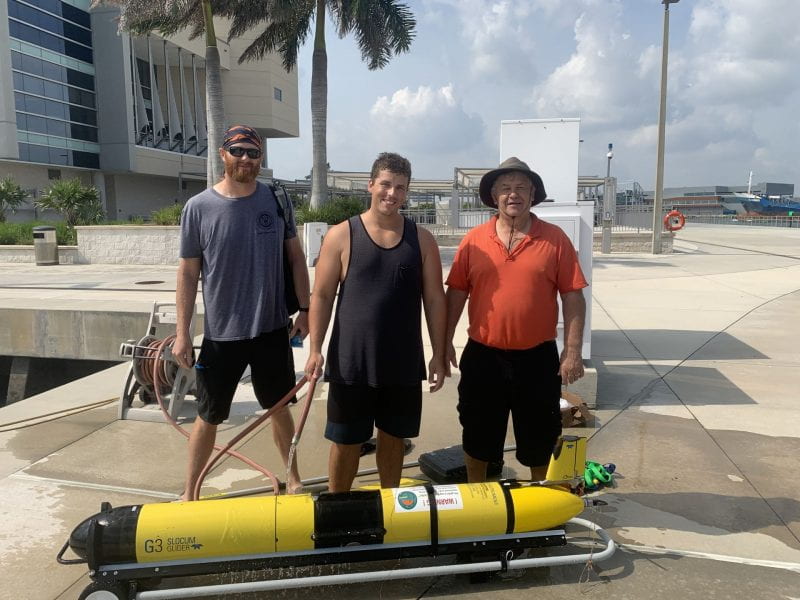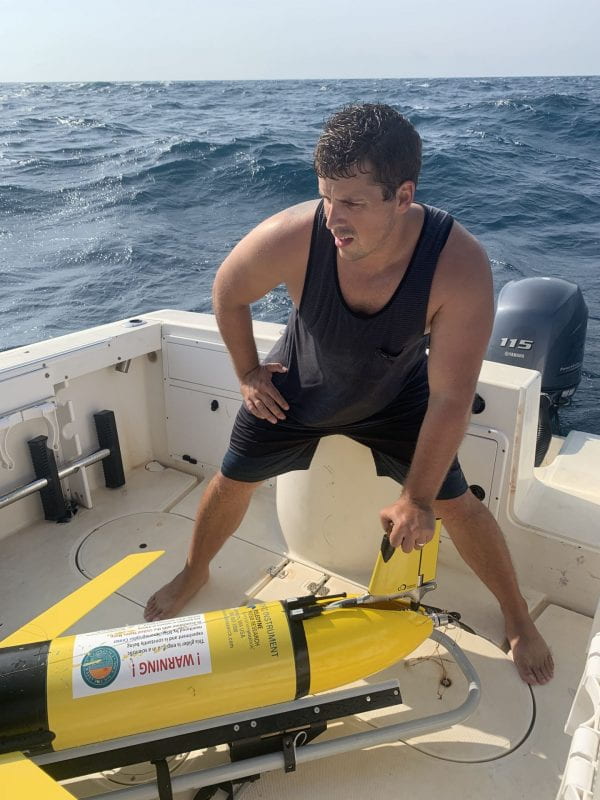Ocean Glider Found After Being Lost at Sea

 The ocean circulation on the Southeast Florida shelf is complex due to the Gulf Stream. Oceanographic measurements have always been a challenge in this area. The currents can be so strong that even the National Data Buoy Center does not take a risk deploying their buoys in the Gulf Stream. As a result, the South Florida shelf is still a “desert” for oceanographic observations. At the same time, this is the area of significant commercial and recreational activities. To address this situation, NSU’s Halmos College of Natural Sciences and Oceanography has been developing observational capabilities in the Straits of Florida employing state-of-the-art technologies including robotic instrumentation.
The ocean circulation on the Southeast Florida shelf is complex due to the Gulf Stream. Oceanographic measurements have always been a challenge in this area. The currents can be so strong that even the National Data Buoy Center does not take a risk deploying their buoys in the Gulf Stream. As a result, the South Florida shelf is still a “desert” for oceanographic observations. At the same time, this is the area of significant commercial and recreational activities. To address this situation, NSU’s Halmos College of Natural Sciences and Oceanography has been developing observational capabilities in the Straits of Florida employing state-of-the-art technologies including robotic instrumentation.
This spring, Halmos College became a center of robotic oceanography. In cooperation with Teledyne Webb Research (TWR), the Halmos College Physical Oceanography Laboratory pioneered the application of the new family of ocean gliders that, for the first time, could operate in strong currents like the Gulf Stream. These robotic instruments provide an unprecedented spatial resolution and report data through a satellite.
The Halmos College is now operating two gliders on the Ft. Lauderdale-Miami coastal area. Physical Oceanography Lab Senior Ocean Engineer Geoffrey Morrison said, “Gliders operate in the area of intense ship traffic and small recreational and fishing boat activities. Gliders show up on the surface for a few minutes to transmit the data through satellite and then dive for the next mission. We have had a case where a glider surfaced near a fishing boat and good Samaritans tried to keep it on the surface thinking that the instrument was in distress. After reading the contact information on the glider, they called us. We asked them to release it and this robotic instrument then went underwater for the next mission.”
While out on a cruise last week, the glider had what appeared to be fishing line tangled around its propeller. “The fishing line was probably tangled around one of the subsurface buoys,” said Halmos College Ph.D. student John A. Kluge who facilitates this project. “After dropping the emergency ballast, the glider surfaced around 4 am on Monday, April 20 and started sending telemetry. The folks from Teledyne kept the glider on the surface and guided the researchers until they found it. This glider is OK and will continue operation. We are reading telemetry and we will soon have a better idea of what really happened.”
Halmos faculty member and primary investigator Alexander Soloviev, Ph.D. said, “An important function of the Physical Oceanography Lab is to prepare the new generation of oceanographers who are proficient with new ocean technologies. Student involvement in field projects is a way to achieve this goal.”
